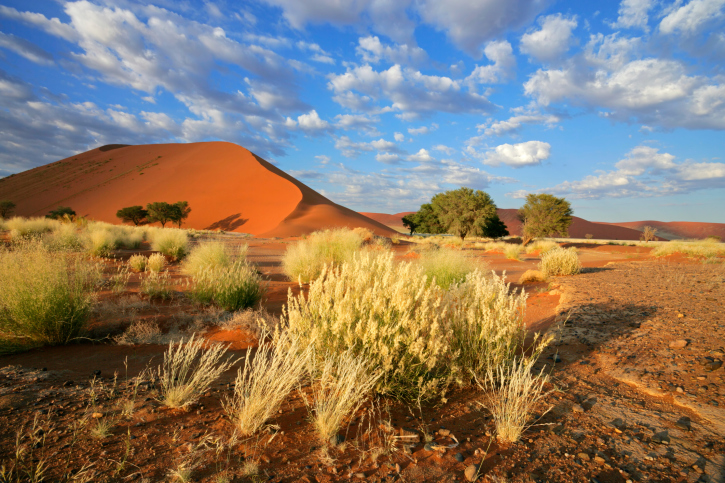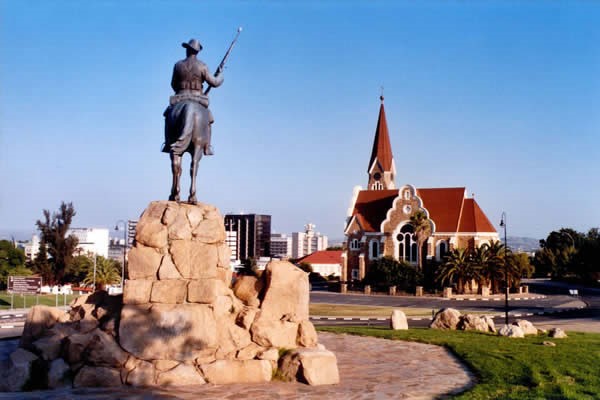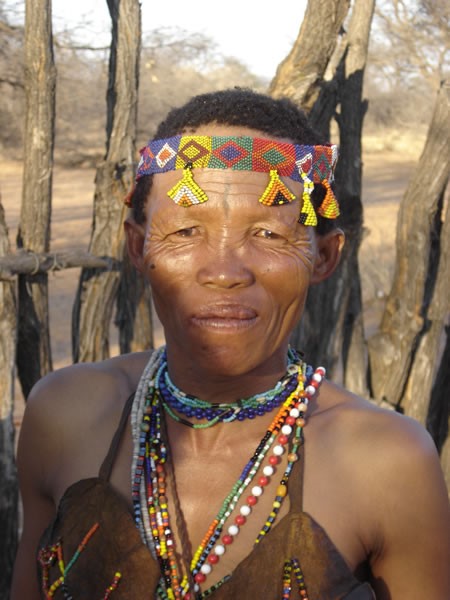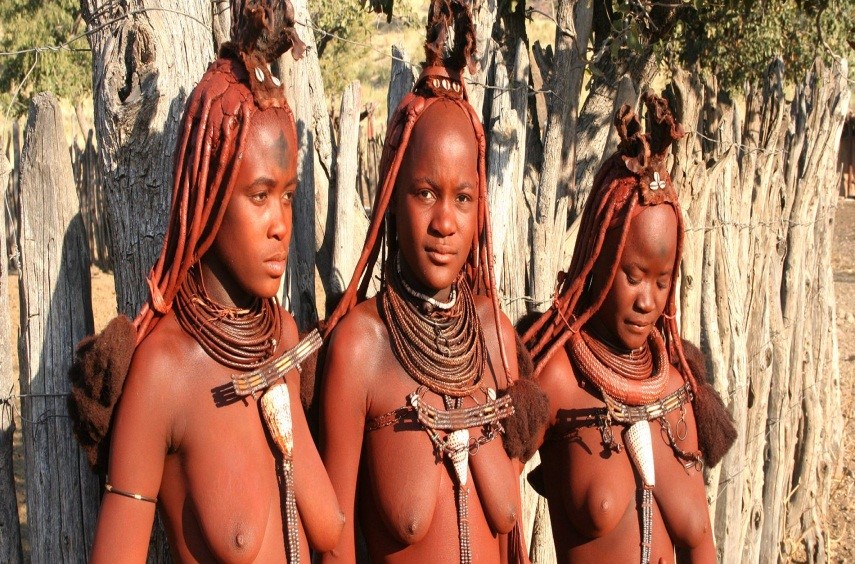
We will pick you up from Hosea Kutako International Airport, situated 40 km from Windhoek, capital of the country. Short city tour, with main attractions: Kristus Kerk, Tynten Palace, Independence Avenue (main street) and drive through Katutura township. Afterwards transfer to the lodge situated out of town, in the African bush. Meals: dinner. Distance: 70 km. Duration: around 1 hour. Accommodation: 1 night, in Windhoek at Tamboti Guest house, River Crossing Lodge or Hilton Hotel Duration: around 8 hrs with stop-overs. Accommodation: 2 nights at either Solitare Guest Farm, Solitaire Country Lodge, Betesda Lodge, Sossusvlei Lodge, Sossus Dune Lodge, Gondwana Desert Lodge, Le Mirage, Little Kulala or Moon Mountain Lodge

Early morning before sunrise, drive towards Sossusvlei and Dead Vlei – a place of the highest dunes in the World, set in the midst of the World’s oldest desert. Unique chance for spectacular landscape photography! Climbing scenic Dune 45, while enjoying incredible desert vistas and ever changing scenery of the Namib. Off-road trail takes us to Dead Vlei where ancient, dried up acacias stand amidst the orange dunes creating surreal landscape. Optional hiking the ‚Big Daddy’ dune and afterwards visit to Sossusvlei with optional hiking the ‚Big Mama’ dune. After lunch, hike through spectacular rock formations of the Sesriem Canyon. Meals: breakfast, dinner. Distance: 150 km on tar, gravel and sand roads.
Adventure starts at sunrise, as we travel through the Namib-Naukluft Park, admiring dried up Kuiseb riverbed and Kuised Canyon. On route, celebrating crossing of the Tropic of Capricorn with the glass of champagne! In the evening, arrival at the coastal town-oasis Swakopmund. Magnificent landscape of the Namib reaches as far as eye can see. Wildlife, grazing antelopes: kudu, oryx and springbuck, mountain zebras, rare black rhino, giraffes and World’s biggest ‚birds that don’t fly’ ostriches. Meals: breakfast, dinner. Accommodation: 2 nights in Swakopmund, at Dunedin Star Guesthouse, Stay@Swakop, Hansa Hotel, Zum Kaiser Hotel Distance: 350 km (gravel road). Duration: 5 hours with stop-overs and lunch break.
Palm-lined streets, seaside promenades, fine accommodation, a pleasant summer climate and decent beaches. Welcome to Swakopmund - Namibia's premier holiday resort! During the summer holidays and long weekends, thousands of Namibians flock to the coast, and this human migration happens for a number of reasons; Swakopmund has a real holiday feel to it and everyone wants to be there; during the December holidays, the cool Namibian coast offers relief from the intense heat of the interior; and more importantly as far as the tourist is concerned in these modern times, Swakop has changed, and has become the countries leading adrenaline destination, with a wide range of activities to suit all ages and (most) egos. The area of Namib Desert around Swakopmund is named the West Coast Recreational Area. And recreation is the towns number one draw card. There are countless pursuits to help you spend your time, and money. For those interested in adventure activities Swakopmund offers sandboarding, quad biking, dune carting, parachuting, hot air ballooning, shark fishing, deep sea fishing and beach angling to name but a few. For the more sedentary there are restaurants, cafes, art galleries, the Swakopmund Museum, a snake park and aquarium.
If danger isn't your middle name, then the architecture and general feeling of Swakopmund might be more to your liking. This town has the ambiance associated with a small German village, and the town seems to be stuck in time. (Less for those who care to jump out of perfectly serviceable aircraft shouting 'Geronimo' before it lands safely.) Although in recent times the new generation have woken up to the tourist potential of the area, Swakopmund still manages to create a feeling of timelessness. Buildings and monuments of note in Swakopmund include the Hohenzollern Building, the Marine memorial, the War memorial in memory of those killed in World War 2, Princess Rupprecht House originally a military hospital now a private guest house.The Kaserne buildings originally served as a barracks and is of a similar design to the Alte Feste in Windhoek and Fort Namutoni in Etosha. The old Swakopmund Prison is still fully operational and provides budget accommodation for the criminal fraternity of the Namibian coast.
Travelling on the coastal salt-road leading us 150 km north to the Cape Cross and the Cape Fur Seal colony. After observing huge family of these aquatic mammals, we are turning east into desert region of Damaraland, traveling towards mountainous Brandberg Massif, one of the most magnificent and majestic places of Namibia. On the way, passing by Damara villages in the communal area, en route chance to spot ostriches, jackals, hyenas and springboks. Meals: breakfast, dinner. Accommodation: 2 nights at White Lady Lodge Distance: 350 km (gravel road, including 160 km salt road). Duration: around 8 hrs.
Damaraland is one of the most scenic areas in Namibia, a huge, untamed, ruggedly beautiful region. Here there are prehistoric water courses with open plains and grassland, massive granite koppies and deep gorges. Towards the west, the geography changes dramatically with endless sandy wastes, able to sustain small, but wide-ranging, populations of desert-adapted elephant, black rhino, giraffe, ostrich and springbok. These animals have adapted their lifestyles to survive the harshness of the sun-blistered, almost waterless desert spaces. Elephant move through euphorbia bush country, and can travel up to 70km in a day in search of food and water and unusually, do not destroy trees in their quest for food. Follow black rhino cow and her calf in typical Damaraland 'melkbos' terrain. Together, Damaraland and Kaokoland are known as the Kaokoveld. Highlights of the area include: The Brandberg - Namibia's highest mountain and home to the famous 'White Lady' Bushman Painting. Twyfelfontein - a wonderful rocky outcrop with thousands of Bushman engravings. Spitzkoppe - a typical pointed inselberg, and a place of great mystery to the ancient San people The Petrified Forest - which is millions of years old. The Vingerklip (finger rock) - a towering finger of limestone that rises 35m above its base.
Wildlife Sanctuary! We are on the way to Etosha National Park – wildlife sanctuary and treasure of Namibia, considered to be one of the most loved and most visited game parks of Africa! We are welcomed by wild animals and white sand of the plains. During afternoon game ride, admiring variety of magnificent animals, among them big mammals: antelopes, giraffes, zebras as well as huge elephants (largest in Africa), rhino, lions, leopards, cheetah and hyenas roaming through the bush. In the evening, relaxing dinner served in the thrilling atmosphere of the wild. At the waterhole, thirsty animals gather for the drink of water, while you are invited to watch the ever-changing theater of nature till late! We will spend next two days on trails of Etosha, searching for wild animals of the savanna. Meals: breakfast, dinner. Accommodation: 2 nights at one of Etosha’s camps Okaukuejo or Halali Distance: 200 km (tarred roads). Duration: around 3 hours with the stop-over. Meals: breakfast. Distance: around 450 km (tarred roads). Duration: 6 hrs including stop-overs for lunch and shopping
A visit to the Etosha National Park is a highlight of traveling to Namibia, offering unique wildlife and game viewing. Etosha, situated in the savannah land was declared a game reserve by the German colonial administration back in 1907. Covers an area of more than 22 000 sqkms and is one of the largest and most magnificent game reserves in Africa. In its center lies a vast salt-pan surrounded by grass and thorn savannah, Mopane bushland, in the west and dry forest, in the north-east. The pan is just about always dry. However, in the southern parts there are water-holes scattered throughout the area, forming the basis of life for countless game. Be it a lion or an elephant, a giraffe or a zebra; almost all African animal species are represented in this huge nature reserve. There is an estimated number of 250 lions in the park, 300 rhinos, 2 500 giraffes, 6 000 zebras and more than 2 000 elephants. Variety of antelope species: Oryx, Kudu, Eland, Wildebeast and Impala live in Etosha. The daintyspringbok are especially numerous, often, they can be observed in enormous herds of several hundred animals. In Etosha, 114 mammal species are found, several are rare and endangered e.g. black rhino (largest number in the world), cheetah and black-faced impala. Etosha’s elephants are the largest in Africa. The tallest, measuring up to 4m. The area has about 30 springs and waterholes that provide excellent game viewing and fantastic photographic opportunities. Visitors should approach and depart from waterholes slowly, with as little noise as possible, as not to disturb the game. The main entrance to the park is the „Andersson Gate” at Okaukuejo. The „Von Lindequist Gate” lies in the east, near Namutoni. A new gate in the north-east, the „Nehale lya Mpingana Gate” (King Nehale Gate) was opened at the beginning of 2003. Etosha National Park has a good infrastructure and well-maintained gravel roads leading to th e waterholes, where game viewing is at its best.
After breakfast, ‚farewell’ Etosha and traveling south to Windhoek, capital of Namibia. Enough time to do last shopping for gifts, souvenirs and curios at the local, open-air craft market and to take the last photos of beautiful African landscape. Transfer to the airport.
We wish you a safe trip filled with warm memories and many happy returns to Namibia.


We have included as much detail as possible; however we will be thrilled to enhance this quotation to suit any specific needs. Low Season 1st of November – 30th of June High Season 1st of July – 31st October Camping Accommodation ( minimum of 4 participants) Mid-range Lodge Accommodation: Luxury Lodge Accommodation: Minimum 2 people per tour. 50% discount for children 12 years old and younger.
If you like what we do Please tell others
If you don't like what we do Please tell us!!
The city centre is characterised by a proliferation of German style buildings, a lasting reminder of Namibia's early colonial history. Early buildings such as the Alte Feste (old fort), Christuskirche and Tintenpalast (the parliament buildings) are of particular historical interest. In a wonderful display of irony, the Alte Feste Fort, once the bastion of German colonialism, now houses the National Museum which places particular emphasis on the freedom struggle and Namibian independence, right in front of the fort is the iconic Reiterdenkmal (equestrian memorial). Other notable buildings in Windhoek include St Mary's Cathedral and the Turnhalle Building.Windhoek has had several names, many inspired by the hot water springs found in the area, the earliest of which were the Damara /Ais //Gams (/ indicates a click in Nama spelling) which means firewater and the Herero Otjimuise or place of steam. Several opinions are offered for the origin of the present name, the most popular of these is that sometime before 1840 Jonker Afrikaner, a Nama leader, named the area Winterhoek, after the farm in South Africa where he was born. Windhoek, or windy corner, is a corruption of this name.